Homepage / soft skill / What they are
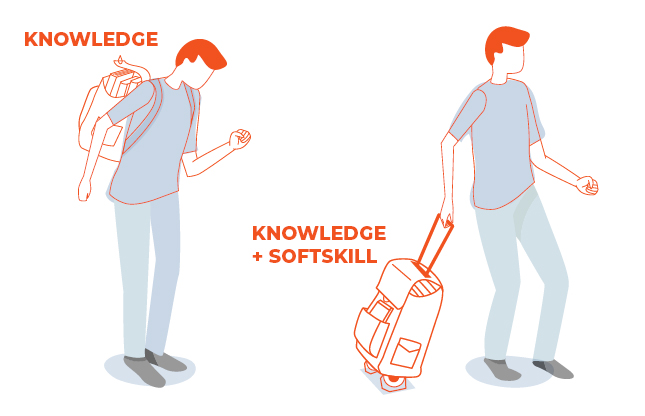
Understand and develop the capabilities
CAPABILITY (= Soft Skill)
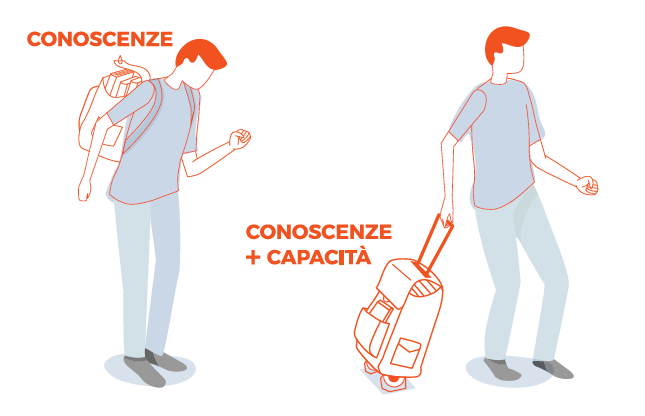
Comprendere e sviluppare le capacità
SOFT SKILL, COSA SONO
Le neuroscienze per capire con semplicità il focus di Time to Mind
Gli Assessment Time to Mind consentono di verificare le
capacità che rappresentano i mattoni con i quali
costruire qualsiasi tipo di profilo che garantisce il
successo per la professione e la carriera. Sono strumenti
fondamentali nei confronti dei collaboratori, di sé stessi
e di chi svolge attività di selezione.
Neuroscience explains how soft skills manifest and form the basis of all Time to Mind applications
Research conducted by Harvard University with Carnegie Foundation and Stanford Research Center concluded that: 85 percent of professional success comes from having developed Soft Skills and that only the remaining 15 percent is attributed to technical skills and knowledge (Hard Skill)
Le capacità rappresentano un vero e proprio capitale
da definire, valutare e far crescere
Capabilities (soft skills) represent real personal and organizational capital to be defined, assessed, and grown
CAPABILITIES
Beyond technical and professional skills, it becomes increasingly important to focus on behaviors to achieve results.
But to ascertain what behaviors need to be enacted, it is necessary to define them into precise and describable capabilities.
Capabilities, as the driving force behind know-how, enable organizational and professional goals to be transformed into results.
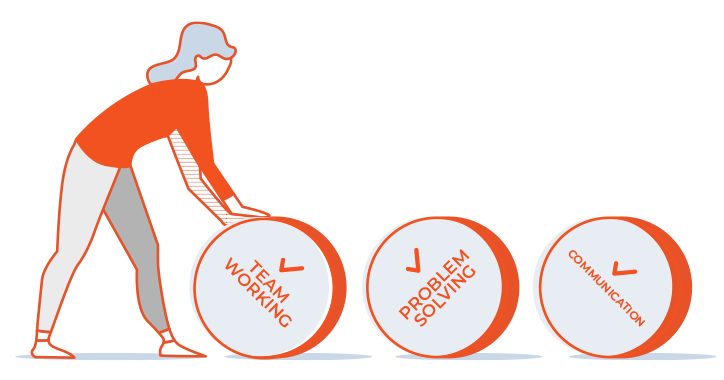
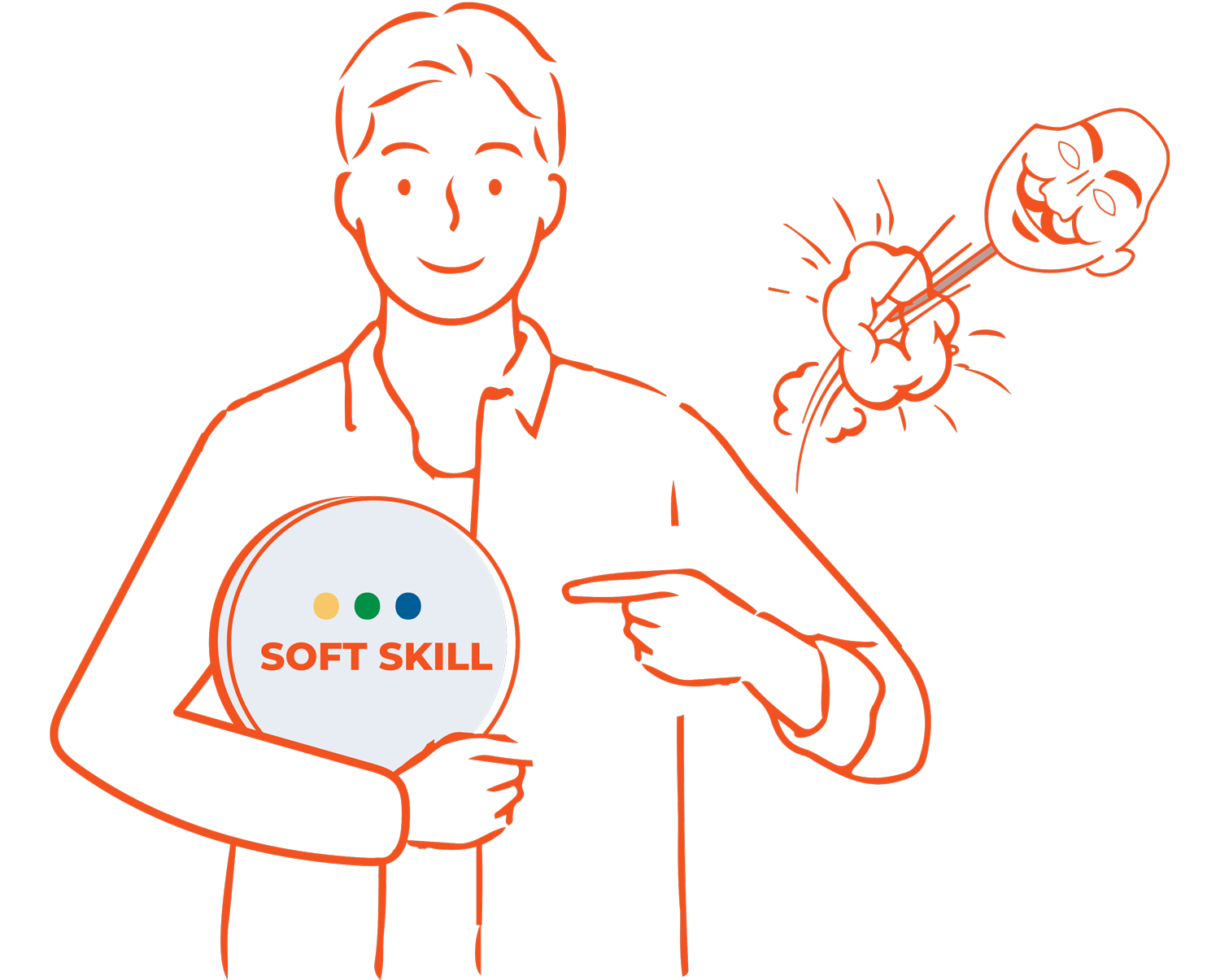
DIFFERENCE BETWEEN ABILITY AND PERSONALITY
Capabilities are representations of describable and observable behaviors.
Personality is a description of intimate thoughts and emotions that seek to explain why and how a person tends to act.
In the objective verification of behavior, the use of diagnostic tools based on personality tests are unable to predict how people under analysis will behave, even if they provide generic and reassuring profiles.
Mental origin of abilities highlighted by neuroscience
The stratification and lateralization of brain areas allows us to highlight fourfundamental
ways of processing information and enacting behaviors divided between:
1. Telencephalon (cortical brain) and 2. Diencephalon (limbic system)
left cortical hemisphere
COLLECTS FACTS AND DETAILS AND SYSTEMATIZES THEM
structural approach

1. CEREBRAL CORTEX
LEVEL OF ABSTRACTION AND SOCIO-CULTURAL

Connection allowed by the corpus callosum

right cortical hemisphere
GRASPS THE TOTALITY OF PHENOMENA AND DEALS WITH UNCERTAINTY
experimental approach

SISTEMA LIMBICO SINISTRO
ATTIVA I PROCESSI DI
ESECUZIONE PREDEFINITI

2. SISTEMA LIMBICO
LIVELLO RELAZIONALE,
EMOZIONALE E OPERAZIONALE
Collegamento tramite l’ippocampo dx e sx

SISTEMA LIMBICO DESTRO
ATTIVA I RAPPORTI
INTERPERSONALI E LE
ESPRESSIONI EMOZIONALI
LEFT LIMBIC SYSTEM
ACTIVATES THE DEFAULT EXECUTION PROCESSES

2. LIMBIC SYSTEM
RELATIONAL, EMOTIONAL AND OPERATIONAL LEVEL

RIGHT LIMBIC SYSTEM
ACTIVATES INTERPERSONAL RELATIONSHIPS AND EMOTIONAL EXPRESSIONS

Connection via the right and left hippocampus

PRIMITIVE BRAIN
(Encephalic Trunk)
LEVEL OF SURVIVAL MECHANISMS AND BASIC IMPULSES
1. CEREBRAL CORTEX
LEVEL OF ABSTRACTION AND SOCIO-CULTURAL
Connection allowed by the corpus callosum
left cortical hemisphere
COLLECTS FACTS AND DETAILS AND SYSTEMATIZES THEM
structural approach


right cortical hemisphere
GRASPS THE TOTALITY OF PHENOMENA AND DEALS WITH UNCERTAINTY
experimental approach
2. LIMBIC SYSTEM
RELATIONAL, EMOTIONAL AND OPERATIONAL LEVEL
LEFT LIMBIC SYSTEM
ACTIVATES THE DEFAULT EXECUTION PROCESSES


RIGHT LIMBIC SYSTEM
ACTIVATES INTERPERSONAL RELATIONSHIPS AND EMOTIONAL EXPRESSIONS
PRIMITIVE BRAIN
(Encephalic Trunk)
LEVEL OF SURVIVAL MECHANISMS AND BASIC IMPULSES
Brain localizations and
typical
MENTAL AND BEHAVIORAL expressions:
The stratification and lateralization of brain areas allows us to highlight fourfundamental
ways of processing information and enacting behaviors divided between:
1.Telencephalon (cortical brain) and 2. Diencephalon (limbic system)
MENTAL CONTROL AREA
Know and understand.
- LOGIC
- ANALYTICAL
- QUANTITATIVE / FACTUAL
- COGNITIVE
LEFT CORTICAL
Abstraction and systematization = Knowing and understanding
AREA OF MENTAL OPENNESS
Choosing
and undertaking
- AUTONOMOUS
- INTUITIVE
- SYNTHESIZING / INTEGRATING
- EXPERIMENTAL
- REALIZATIONAL
RIGHT CORTICAL
Abstraction and application = Coping with unpredictability

- APPLICATION
- PREVIDED
- ADJUSTABLE
- DETAILED
- SEQUENTIAL
LIMBIQUE LEFT
Objective application = Employ routines
...IN WHICH OBJECTIVITY PREVAILS
- EMOTIONAL
- INTERPERSONAL
- BASED ON FEELINGS
- CINESTETIC
LIMBIQUE RIGHT
Subjective application = Coping with relationships
...IN WHICH SUBJECTIVITY PREVAILS
MENTAL CONTROL AREA
Know and understand
- LOGIC
- ANALYTICAL
- QUANTITATIVE / FACTUAL
- COGNITIVE
LEFT CORTICAL
Abstraction and systematization = Knowing and understanding
- APPLICATION
- PREVIDED
- ADJUSTABLE
- DETAILED
- SEQUENTIAL
LIMBIQUE LEFT
Objective application = Employ routines
...IN WHICH OBJECTIVITY PREVAILS
AREA OF MENTAL OPENNESSC
Choosing and undertaking
- AUTONOMOUS
- INTUITIVE
- SYNTHESIZING / INTEGRATING
- EXPERIMENTAL
- REALIZATIONAL
RIGHT CORTICAL
Abstraction and application = Coping with unpredictability
- EMOTIONAL
- INTERPERSONAL
- BASED ON FEELINGS
- CINESTETIC
LIMBIQUE RIGHT
Subjective application = Coping with relationships
...IN WHICH SUBJECTIVITY PREVAILS
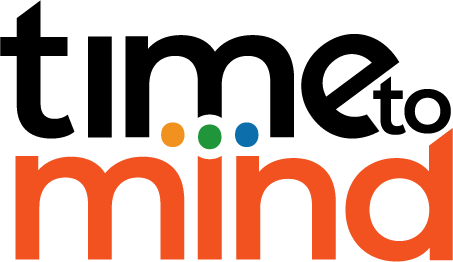
Time to Mind SA
Corporate values and legal compliance
Understanding Time to Mind
Free trial
Enter the Time to Mind platform, choose your ability, try it out free of charge.
We accept
